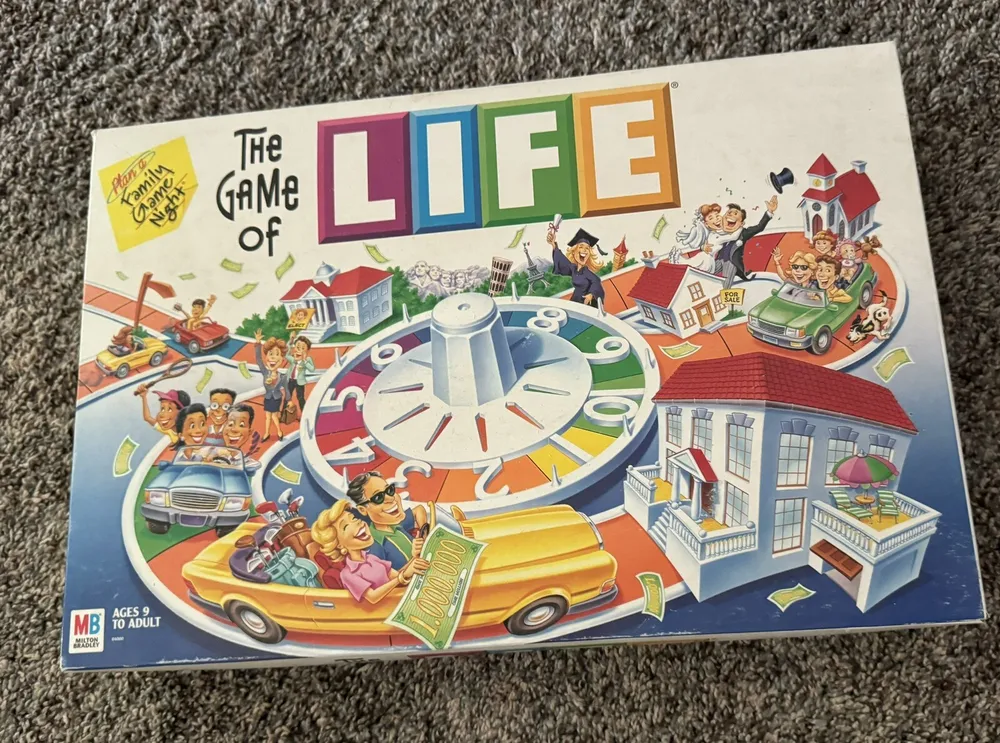The Game of Life (1960)
The Game of Life
The Game of Life, also known as Life, is a board game originally created in 1860 by Milton Bradley as The Checkered Game for Life, the first ever board game for his own company, the Milton Bradley Company. The game simulates a person’s travels through their life, from early adulthood to retirement, with college if necessary, jobs, marriage, and possible children along the way. The game was originally created in 1860 by Milton Bradley as The Checkered Game of Life, and was the first game created by Bradley, a successful lithographer. The game sold 45,000 copies by the end of its first year.
Why is The Game of Life Popular?
The Game of Life has become a timeless American tradition since its entry into the market in 1960. While playing the game, families have had fun carrying out life’s little adventures by placing pink and blue peg people in cars while traveling a 3-D game board and making life decisions on the way to “retirement.” The game has been popular for over 150 years and has been inducted into the Toy Industry Association’s Hall of Fame.
Game Components of The Game of Life
How To Setup The Game of Life
To set up the game, each player chooses a token and places it at the “Start” space on the board. Each player selects a career and salary card, which determines their starting salary. The Chance and Destiny cards are shuffled and placed within reach of all players. The banknotes, stock certificates, and other game components are distributed as per the instructions.
Gameplay Mechanics and Game Objective
Player Experience
Playing The Game of Life is a fun and interactive way to simulate the ups and downs of real life. Players experience key life milestones, make financial decisions, and deal with unexpected events. The game is simple enough for children to understand but complex enough to keep adults engaged.
Pros
Cons
Personal Thoughts on The Game of Life
The Game of Life is ideal for families and children, providing a light-hearted and educational experience. It is not designed for serious gamers looking for complex strategies but is perfect for casual game nights. The game’s ability to simulate life’s journey in a simplified manner makes it both entertaining and enlightening, helping players understand basic life decisions and financial responsibilities.
We are supported by our audience. When you purchase through links on our site, we may earn an affiliate commission, at no extra cost for you. Learn more.

